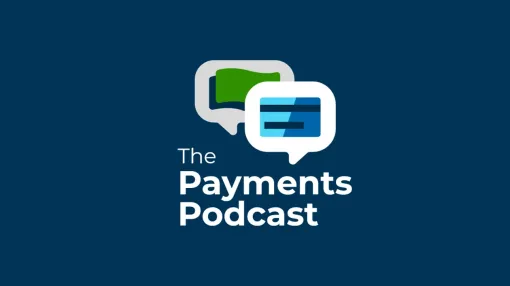Slide it. Swipe it. Scan it. Paying with credit cards is almost automatic for consumers, and we’re all familiar with the mechanics in our daily lives.
Virtual cards have not caught on in business-to-business payments with the same fervor, but that’s changing fast. Back in 2020, Juniper Research in the United Kingdom unveiled a study predicting that the volume of virtual card payments would increase threefold from $1.6 trillion by the year 2025. Currently, the firm estimates the total value of virtual card payments globally clocks in at $2.4 trillion. The market size for these payments is expected to increase to $9.1 trillion by 2027.
Per a recent Citizens study, virtual card usage has almost caught up to physical card usage in industries like healthcare and gaming, and it is gaining steam as a preferred payment method in industries like transport and logistics. The growing realization is that virtual cards are not like consumer cards, being used on a whim to cover impulse buys and essentials but can comfortably handle most B2B supplier payments with significant benefits.
What does that mean for your business? Either you’ve already seen the value of adoption, or you can realize those benefits right now while the wave is still cresting. Here’s a look at virtual card’s accelerating growth and what it means to fit this payment type into the mix at your business.
Virtual cards, real value
The headline value of these card payments is the fraud prevention. Chris Gerda, our chief risk officer at Bottomline, notes that the one-time tokenized payment type is extremely difficult to intercept.
“We’re seeing bad actors successfully intercepting and stealing check payments more and more frequently. Companies not using secure networks to make digital payments are exposing themselves to additional risk,” Gerda said. “That said, the single most secure payment method you can use today, ideally over a network, is virtual card.”
This becomes more and more urgent as the pace and losses of check fraud pile up, with a New York Times story noting that check fraud nearly doubled from 2021 to 2022.
In addition to the security benefits, virtual card is also simply cheaper and more efficient for those businesses using them to pay. Half of business leaders in a recent Gartner survey concluded that it was cheaper to pay by virtual card than any other payment type, while nearly half of suppliers saw the benefits of streamlined and automated receipt and reconciliation from accepting virtual card. The cost is not zero on either side of the ledger, but they’re close enough when compared to the $5-plus per check processing cost and risk of other payment types being intercepted when they’re not made over a secure network.
Finally, speed for both parties is driving adoption. Businesses with remote and hybrid workforces are happy to leave behind check printing and approvals in favor of quickly prepared, easily sent virtual card emails. In turn, suppliers simply get their money faster, especially compared to checks traveling via an increasingly slow U.S. Postal Service. Cash management efficiency provided by virtual card is, as Citizens survey reveals, nearly universally appreciated.
Businesses want to be sure they can make these payments work with their ERPs. As Citizens noted, integrating this payment type with your ERP and other systems can take time and energy that can be frustrating, but it’s an upfront issue that gives way to smoother processes down the line.
But in an era where speed is king, queen, and most of the rest of the royal family, the benefits of making and receiving virtual card payments are becoming apparent to businesses of all stripes. They certainly outweigh the downsides, which include interchange fees for suppliers and getting suppliers onboarded with the payment type.
Optimizing your payment mix with virtual card
This is something we talk about often at Bottomline because there is no one payment type to rule them all when it comes to paying suppliers. As virtual card grows in prominence and importance, it will not entirely diminish the value of ACH, wire, and (to a lesser extent) the humble check. It will simply take on a larger share of your ideal payment mix.
What is your ideal mix? While the answer will vary per your business, it will include as few check payments as you can make, given the security risks and inefficiency of that payment type. For suppliers who simply prefer to be paid by ACH, even a premium solution that carries fees, continuing to pay via that method just makes sense at the moment. For all other payments, and for suppliers who can see the speed and security benefits of receiving virtual cards, it just makes sense to make the switch.
Over time, it’s likely virtual card will approach a third-to-a-half of all B2B payments made, given their obvious benefits for buyers and suppliers alike. Your ideal mix will include a ratio in that range, and once you start receiving rebates and saving time and money on virtual card payments, you might find you’d like to encourage your suppliers to accept them at an even higher rate.
Regardless of how your mix shakes out, virtual cards are shaking up the natural order in supplier payments.

